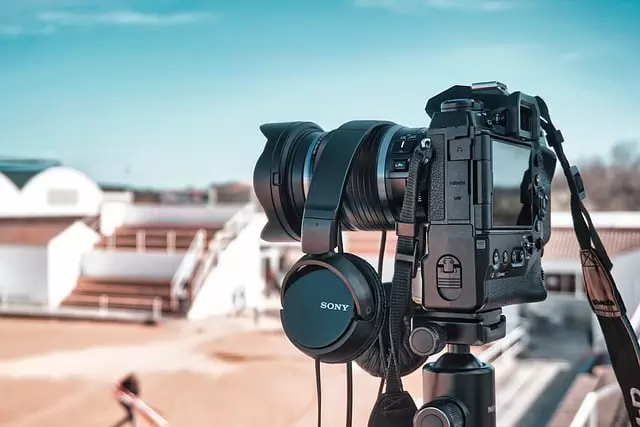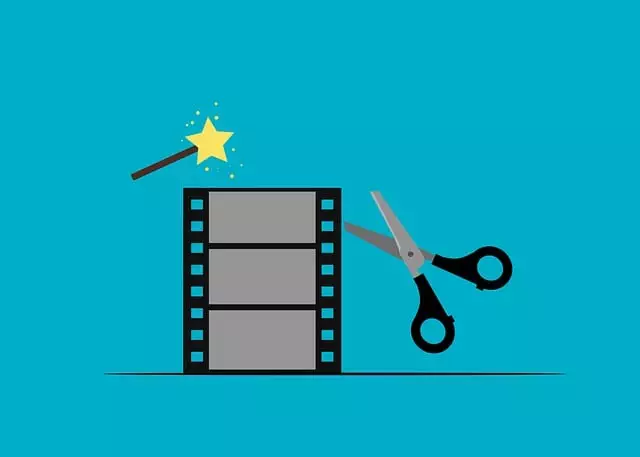The digital video landscape has evolved dramatically from VHS and DVD to advanced streaming technologies. DivX, an open-source compression standard introduced in the late '90s, played a pivotal role by offering superior video quality with significantly reduced file sizes, democratizing content sharing. Today, despite modern codecs like H.264 and H.265, DivX remains relevant due to its efficient compression methods. Converting videos to DivX is straightforward using accessible tools like VLC or specialized converters, ensuring high-quality playback across devices. This process not only preserves the original quality but also opens doors for content creators and distributors to optimize their video libraries for diverse streaming and downloading scenarios, ultimately enhancing the digital multimedia experience. Learn how to convert DivX effortlessly to unlock its advantages in today's dynamic video landscape.
A Game-Changer for Digital Video Distribution: Unlocking the Power of DivX Conversion
The digital video landscape has evolved dramatically since its early days, with formats like DivX emerging as game-changers. This blog post delves into the history of video codecs, highlighting the challenges that led to DivX’s revolutionary impact on digital video distribution. We’ll explore how this technology optimizes file sizes without compromising quality, enhances streaming experiences, and drives innovation in 4K and VR content delivery. Whether you’re a tech enthusiast or a beginner looking to convert your videos, this guide provides a comprehensive overview of the DivX format, including step-by-step instructions on how to leverage its power for an improved digital video collection.
# Blog Post Outline: A Game-Changer for Digital Video Distribution – Unlocking the Power of DivX Conversion

The digital video landscape is undergoing a significant transformation, and at the forefront of this change is DivX—a powerful format that promises to revolutionize how we distribute and consume media. By leveraging advanced compression techniques, DivX offers unparalleled video quality while maintaining remarkably small file sizes. This makes it an ideal choice for streaming and downloading, especially in light of today’s bandwidth constraints and device limitations.
Converting videos to DivX is a straightforward process that anyone can accomplish. With the right tools and a bit of technical savvy, users can easily optimize their video content for maximum efficiency and compatibility. The how-to guides and resources available online make it accessible for beginners while also catering to advanced users seeking fine-grained control over their conversions. Embracing DivX as a distribution method is a step towards a more efficient, high-quality digital media future.
The Evolution of Video Formats: A Historical Perspective

The digital video revolution began with early formats like VHS and DVD, which laid the groundwork for today’s streaming era. These analog and digital predecessors, however, had limitations in terms of quality, storage capacity, and accessibility. The advent of DivX in the late 1990s marked a significant turning point. DivX, an open-source compression standard, offered unprecedented video quality while significantly reducing file sizes—a game-changer for online distribution. This innovation democratized digital media, enabling users to easily share and access high-quality videos on the nascent internet.
The evolution from VHS to DVD to DivX illustrates a clear trend: each step forward improved not only convenience but also picture clarity and audio fidelity. Today, with advancements in streaming technology and powerful processors capable of handling sophisticated codecs like H.264 and H.265 (HEVC), the process of converting DivX videos has become seamless. Users can now effortlessly convert their DivX collections to modern formats using intuitive software, ensuring compatibility with today’s devices and platforms, while preserving the high-quality experience that DivX pioneered over two decades ago.
– Explore the journey from early video formats to the digital age.

The evolution of video distribution has been a captivating journey, marking a significant departure from the early days of analog formats. The transition from VHS and Betamax to digital media was pivotal, setting the stage for the vibrant digital video landscape we enjoy today. This transformation was facilitated by innovative technologies that revolutionized how we create, share, and consume visual content. One notable game-changer in this evolution is the DivX format, which emerged as a powerful tool during the early 2000s, offering efficient compression methods that made video files smaller without compromising quality.
The process of converting videos to DivX (or how to Convert DivX) played a crucial role in this shift. It enabled users to easily share and stream videos online, fostering a new era of digital entertainment. With its ability to compress videos effectively, DivX became a preferred choice for content creators and distributors alike, streamlining the distribution process and making high-quality video accessible to a global audience. This advancement laid the groundwork for modern streaming platforms and significantly influenced the way we consume media today.
– Discuss the challenges and limitations of traditional codecs.

Traditional video codecs, while widely used, come with their fair share of challenges and limitations that hinder efficient digital video distribution. One of the primary issues is compatibility; with constantly evolving technology, older codec formats may become obsolete, rendering them incompatible with newer devices and platforms. This creates a significant hurdle for content distributors who need to ensure their videos are accessible across a wide range of devices. Additionally, traditional codecs often struggle with maintaining high-quality video while reducing file sizes, resulting in larger file sizes that can be challenging to stream or download, especially over slower internet connections.
Converting videos to formats like DivX offers a promising solution to these problems. DivX is known for its ability to compress videos effectively without compromising quality, significantly reducing file sizes while maintaining compatibility with a broad spectrum of devices and software. By leveraging the right conversion tools that support DivX encoding, content creators and distributors can easily adapt their video content to meet modern streaming and downloading demands. This not only enhances user experience but also opens doors for more efficient digital video distribution strategies.
– Introduce DivX as a revolutionary solution in digital video compression.

DivX emerged as a groundbreaking solution in the realm of digital video compression, transforming how we perceive and share multimedia content. This revolutionary technology offers unprecedented efficiency in file size reduction while maintaining exceptional video quality, making it a game-changer for streaming and downloading. With DivX, users can easily compress high-definition videos into smaller files without sacrificing visual integrity, which is particularly beneficial for online distribution.
Converting to DivX has never been more accessible thanks to user-friendly tools readily available. By utilizing these conversion software options, content creators and enthusiasts alike can optimize their video libraries, ensuring seamless playback across various devices and platforms. This process involves simple steps: importing videos, selecting DivX as the output format, and adjusting settings to achieve the desired balance between file size and quality. With How to Convert DivX guides widely accessible, anyone can master this technique and leverage the advantages of this innovative compression standard.
Understanding DivX: Features and Benefits

DivX, a revolutionary video compression technology, has transformed digital video distribution by offering unparalleled quality and efficiency. Its primary advantage lies in its ability to compress videos significantly while preserving high-quality visuals and audio, making it ideal for streaming and online content delivery. This is achieved through sophisticated algorithms that analyze and reduce video data without notable loss of perception, ensuring a smooth viewing experience.
Converting DivX files is straightforward thanks to the widespread availability of compatible software. Users can easily utilize tools like VLC Media Player or specialized DivX converters to transcode videos into other formats for various purposes. This flexibility not only ensures compatibility across different devices and platforms but also allows content creators and distributors to optimize their videos for specific use cases, further enhancing the overall digital video experience.
The digital revolution has transformed how we consume and share video content, and DivX stands as a pivotal technology in this evolution. By offering superior compression and playback capabilities, it addresses the challenges of traditional codecs, enabling more efficient digital video distribution. Learning how to convert DivX files is not only a matter of unlocking these benefits but also ensuring compatibility with modern devices and platforms. As we continue to advance technologically, leveraging solutions like DivX will be key in shaping the future of digital media.
